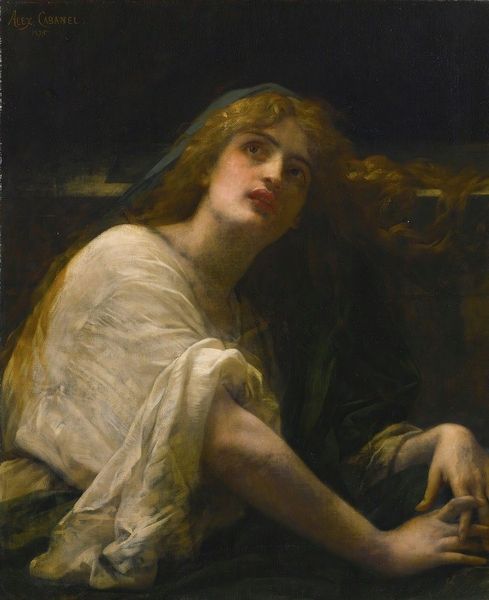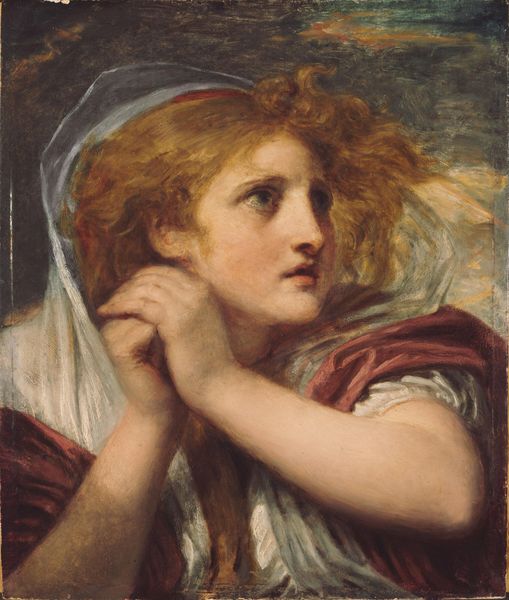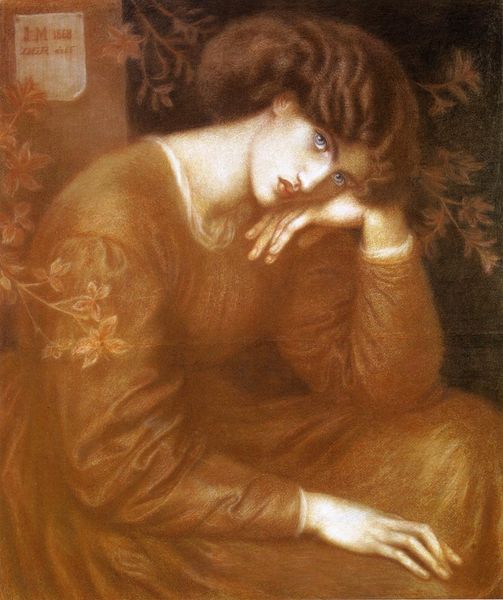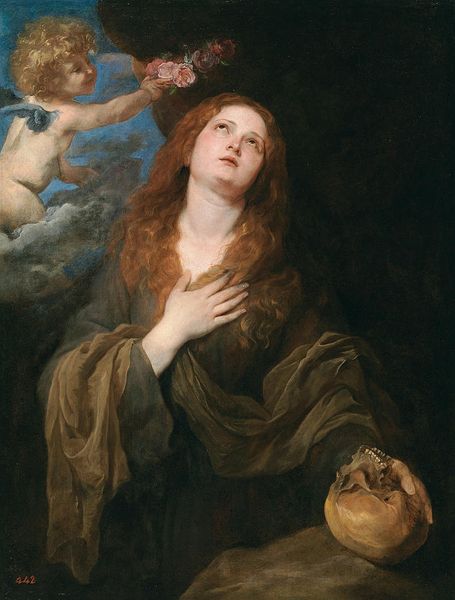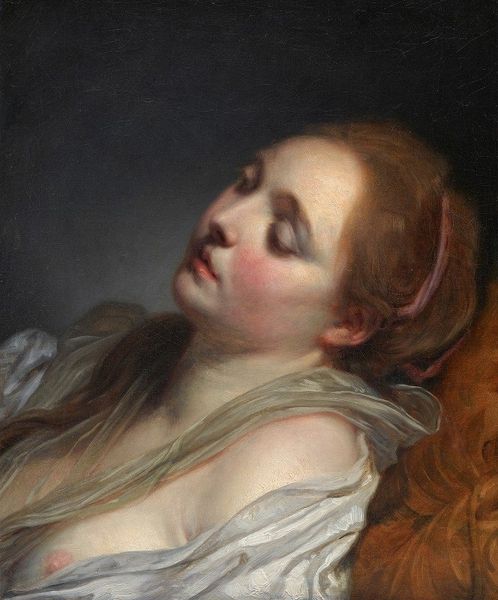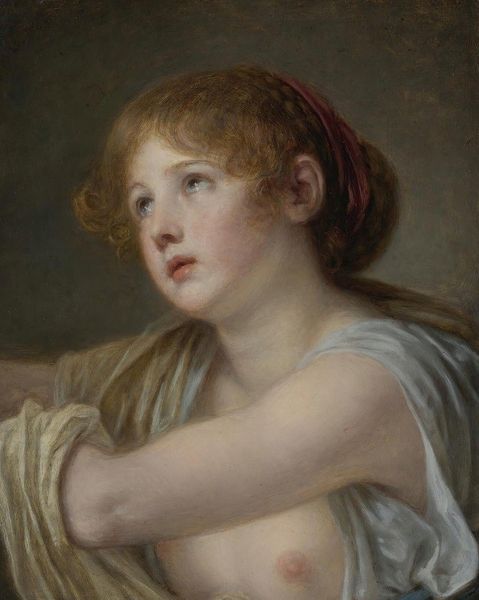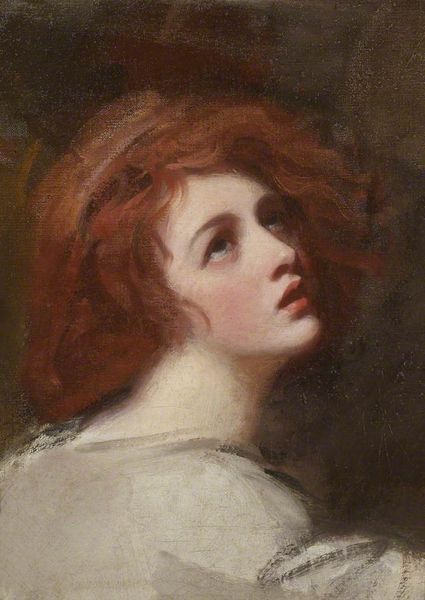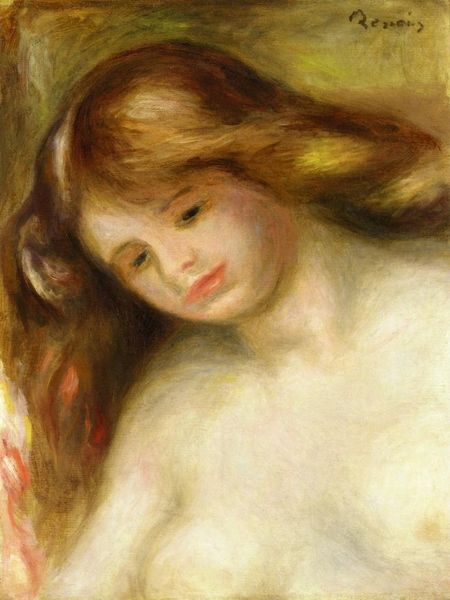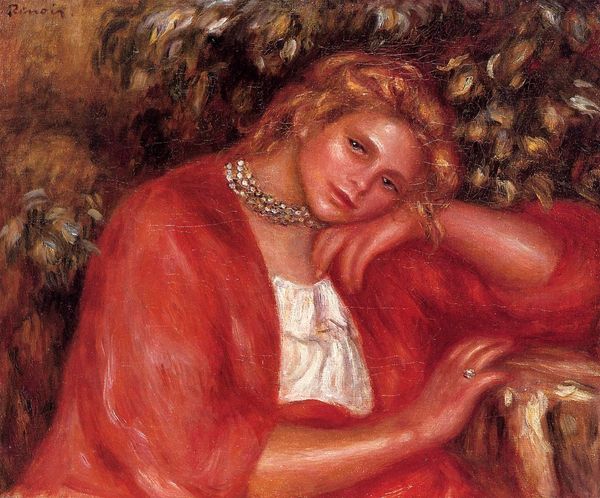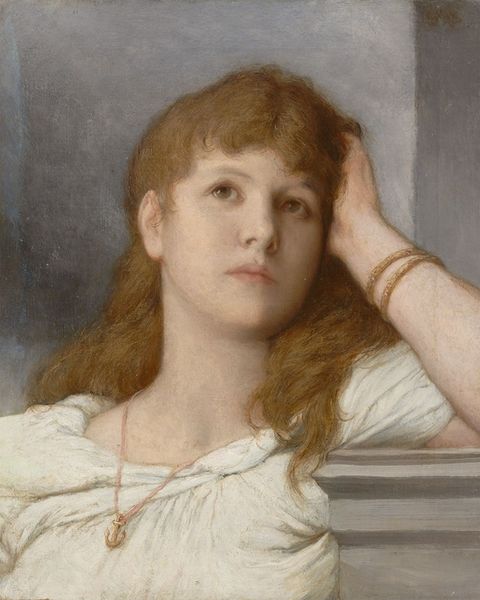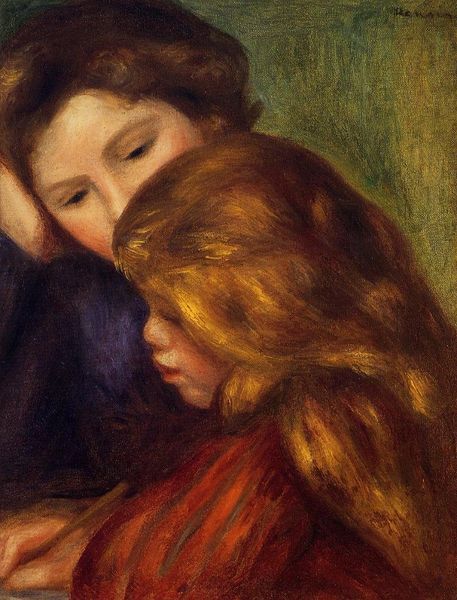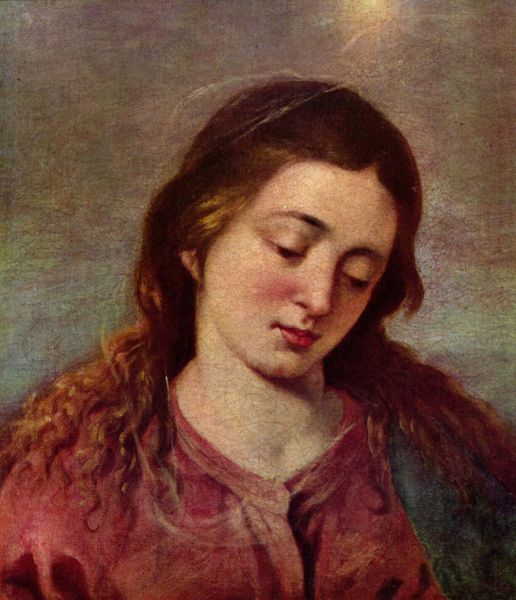
painting, oil-paint
#
portrait
#
baroque
#
painting
#
oil-paint
#
mannerism
#
figuration
#
romanticism
#
chiaroscuro
#
history-painting
#
nude
Copyright: Public Domain: Artvee
Curator: Here we have "A young woman resting her head, probably the Penitent Magdalene," an oil-on-canvas painting attributed to Anthony van Dyck. Editor: My first impression is one of quiet anguish. The subject’s averted gaze and the somber tones create a palpable sense of sorrow and introspection. Curator: Indeed. Note the artist’s skillful use of chiaroscuro. The dramatic contrast between light and shadow not only models the figure but also enhances the emotional intensity of the scene. Editor: Absolutely. And think about the Magdalene herself: she is so potent as a symbol for sin and redemption. The romantic style here really highlights the universal human experience of regret and the search for solace. Van Dyck’s representation elicits a feeling of intimacy; it's more psychological than plainly historical. Curator: Yes, the psychological depth is striking. You'll notice the delicate brushwork particularly evident in rendering her face and flowing hair, which is bathed in warm light, offering a glimpse of hope amidst the gloom. Also the gaze… it draws the viewer in; it serves to intensify the figure’s palpable presence. Editor: Considering the probable subject matter, what I appreciate is the absence of any overtly religious iconography. No cross, no skull, no jar of ointment. Van Dyck distilled her story down to its rawest, most human element. Her downcast gaze evokes themes of loss, and it begs the question of whether we're witnessing a moment of despair or contemplation. Curator: The title is, as you know, conjectural; one might simply consider the painting as a study of the human figure in an emotional state. The formal structure, that stark contrast of light and shadow, suggests a turning point. She’s not just a figure of sorrow. The possibility of transformation is written into the very composition. Editor: Agreed. It allows a space for our own interpretations of sin, forgiveness, grief, and, ultimately, resilience. Curator: I'd say exploring its aesthetic and thematic tensions reveals a potent study of humanity—its darkness and light. Editor: I find it remarkable how Van Dyck took religious lore and rendered it accessible on an intimate scale.
Comments
No comments
Be the first to comment and join the conversation on the ultimate creative platform.
